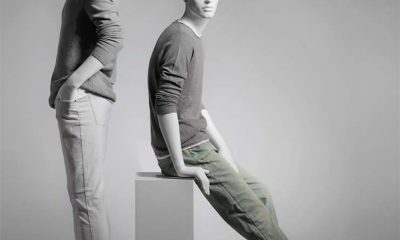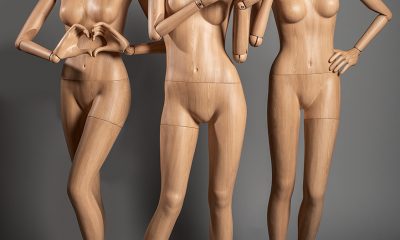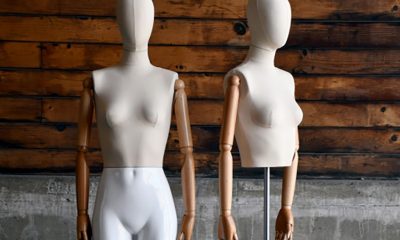In today’s competitive, budget-conscious retail arena, what visual merchandiser wouldn’t want to have high-quality mannequins at a fraction of the cost? And so the temptations are great when a retailer has the chance to get what appears to be big-name quality at suspiciously low prices.
Be careful of such temptations. If the mannequin you acquire imitates a higher-priced model in design, pose, paint, facial expression or some other details, you’re likely breaking the law. Retailers face legal liability if there’s a whiff of suspicion that they conspired to have cheaper imitations produced. And – here’s the big cautionary message – retailers are liable even if they didn’t know the mannequins they purchased were copies.
“Mannequins are protected by copyright law,” says John Froemming, partner in the Washington, D.C., law firm Howrey LLP, “if the products have sufficient creativity and originality. And the threshold for that is fairly low. The law says there must be ‘some modicum of creativity’ beyond the functionality of the product. With most high-quality mannequins, the manufacturer hires the sculptor, finds the models, poses and sculpts and makes other artistic decisions. That qualifies as ‘creativity’ under the law.”
Copyright protection is getting a great deal of tightening these days, what with “designer” handbags available on urban sidewalks. And much of this knocked-off stuff comes from Asia, where there’s almost no regulatory oversight.
“I get approached frequently by companies in the Far East that want to manufacture our product,” says Michael Steward, executive vp at Adel Rootstein USA (New York). “What many don’t understand is that ours are highly designed and very creative and – probably most important – are manufactured correctly. Other mannequins might look the same, but the quality isn’t there.”
And so, warns Steward, imitations fall apart. Or the joints may not work properly or finishes may crack or the clothes not fit right. “And if so,” he says, “what about customer service? Who fixes the problems?”
But the consequences for retailers can be greater than a mannequin falling apart or an outfit not fitting. “Copyright infringement liability is strict liability,” says attorney Jessica Bradley, an associate at Howrey LLP who has represented Adel Rootstein in several recent actions. “No intent or knowledge need be shown. We don’t have to prove that defendants knew the mannequins were knock-offs. We don’t even have to prove that they should have known the mannequins were knock-offs.”
Mannequins can be copied in a number of ways: right off a store floor, for example, or from photographs in manufacturers’ catalogs and marketing materials. “We’ve sent samples to retailers,” says Roger Friedman, ceo of Bernstein Display (Brooklyn, N.Y.), “then seen almost exact replicas in the stores that were evidently made by other, cheaper vendors.” Bernstein, which has a patent for magnetic arm fittings, has seen other manufacturers exhibiting mannequins with the exact fittings at trade shows. Bernstein has also created custom prototypes for retailers, then seen someone else get the job and create the same product.
“We invest a lot of money in R&D, design and manufacturing,” says Friedman, “and I don’t think there’s much awareness or appreciation of that investment.”
Rootstein is letting its attorneys do its talking. Steward says the company recently had two cases settled successfully out of court and is pursuing action against “a large U.S. retailer with a lot of stores.”
In some cases, it’s easier to bring an action against a retailer than against a manufacturer, says attorney Bradley. “All you need is a photograph of the mannequin in the store,” she says. “And the statute is looking for ‘substantially similar.’ ‘Identical’ is not required.”
Penalties can include stiff fines, reimbursement of plaintiff’s legal fees and court costs and impoundment of the mannequins in question. There’s virtually no statute of limitations, either. Copyright protection for works owned by corporate entities lasts for up to 120 years from the creation date.
“Retailers have become very sensitive to these copyright issues,” says Jack Hruska, executive vp, creative services, for Bloomingdale’s. “If we purchased a Louis Vuitton handbag and didn’t know the source, we know we’d be liable. Similarly, we only buy mannequins from somebody we know and regularly do business with. We know where our mannequins come from.”


 Photo Gallery1 week ago
Photo Gallery1 week ago
 Headlines4 days ago
Headlines4 days ago
 Headlines1 week ago
Headlines1 week ago
 Headlines2 weeks ago
Headlines2 weeks ago
 Headlines1 week ago
Headlines1 week ago
 Designer Dozen1 week ago
Designer Dozen1 week ago
 Headlines1 week ago
Headlines1 week ago
 Headlines1 week ago
Headlines1 week ago












